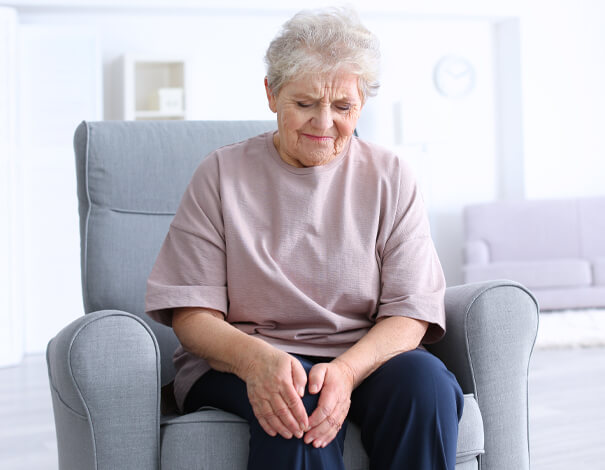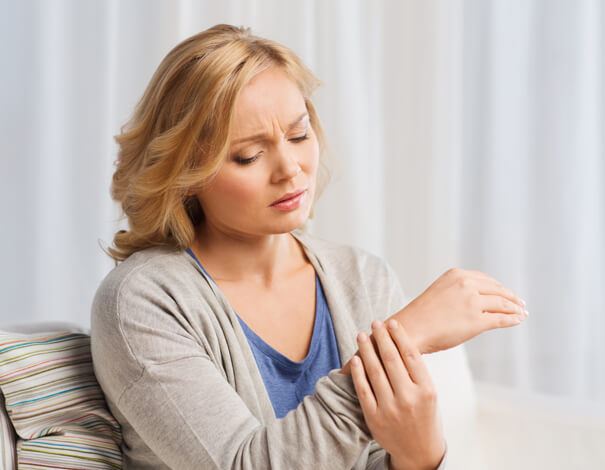Soft Tissue Injuries
Injuries to muscles, tendons, and ligaments—the soft tissue that supports the body’s joints—can occur all of a sudden following a blow, a fall, or an awkward movement. They may also be caused by overuse of a joint due to repetitive tasks, poor posture, or overtraining.Glossary of common soft tissue injuries (strains, ruptured tendon, sprains, tendinitis and bursitis)
A muscle strain is an acute injury that results in the tearing of muscle fibres. The most common zones for muscle strain are the back and thighs.
A ruptured tendon is a partial or complete tearing of a tendon (tissue connecting a muscle to bone). The Achilles tendon on the heel is one common site for a ruptured tendon.
A sprain is an injury to a ligament. Ligaments are bands of tissue that connect the bones of a joint. Ankle sprains are among the most common sprains.
Tendinitis (sometimes known as tendinopathy) is an inflammation of a tendon caused by overuse. It occurs most frequently in the shoulder, heel, knee, elbow, wrist, and hip.
Bursitis is an inflammation of a bursa caused by overuse. A bursa is a small liquid-filled sac whose purpose is to reduce friction between a tendon and a bone. Bursas located in the shoulders, elbows, wrists, and feet are most commonly affected.
Typical symptoms of soft tissue injuries
Here are some symptoms of soft tissue injuries:
- Pain of varying intensity, often described as aching, throbbing or sharp
- Swelling of the affected area; the faster and greater the swelling, the more serious the injury
- Bruising: The bigger the bruise, the more serious the injury
- Inability to use the affected part of the body normally
- Stiffness and loss of range of movement
How to treat soft tissue injuries using the RICE method
Early treatment is critical because soft tissue injuries can become a source of chronic pain. The time required for the injury to heal depends on the type and severity of the injury, as well as the person’s age and health.
When the injury is more severe, e.g., significant pain or swelling, and/or inability to move the affected limb, it’s best to see a doctor. If the limb appears deformed, twisted, or misaligned, it may be fractured or dislocated, and you should go to the emergency room without delay.
In people who are otherwise healthy, a minor injury (bearable pain, slight swelling) can be treated at home using the RICE method.
During the first 48 hours:
- Rest: Avoid putting weight on the affected joint for a few days. Wearing a sling or a brace can help support the injured limb and allow it to rest.
- Ice: Applying ice (no longer than 10 minutes at a time, several times a day) to the affected zone within the first few hours of suffering the injury can help limit swelling slightly. Be sure to protect the skin with a towel, to prevent frostbite.
- Compression: For acute injuries, applying an elastic bandage can help limit swelling.
- Elevation: Where possible, elevate the injured part of the body so that it is higher than your heart. This position helps alleviate pain and may limit swelling.
You can also take an over-the-counter painkiller to relieve the pain. Your pharmacist can help you choose the right product for your needs.
After 48 hours :
You should stop the RICE method and carefully start moving the injured limb. Using a heat pad (low setting) and massaging the injury may help relieve residual pain and muscle stiffness. A physiotherapist can also recommend rehabilitation exercises to help you recover from the injury.
With tendinitis and bursitis, it is essential to stop doing the activity that caused the injury. Where possible, take the necessary corrective measures to avoid doing that particular activity or movement, for example, by correcting poor posture at work or by modifying your training.
If you have any questions or need advice on how to treat a minor injury at home, ask your pharmacist.
The pharmacy services presented in this section are offered by pharmacist owners who are affiliated with Uniprix. The pharmacists are solely responsible for the professional activities carried out during the practice of pharmacy. These services are offered in participating pharmacies only. Certain fees and conditions may apply.
* The information contained herein is provided for informational purposes only and is not intended to provide complete information on the subject matter or to replace the advice of a health professional. This information does not constitute medical consultation, diagnosis or opinion and should not be interpreted as such. Please consult your health care provider if you have any questions about your health, medications or treatment.




